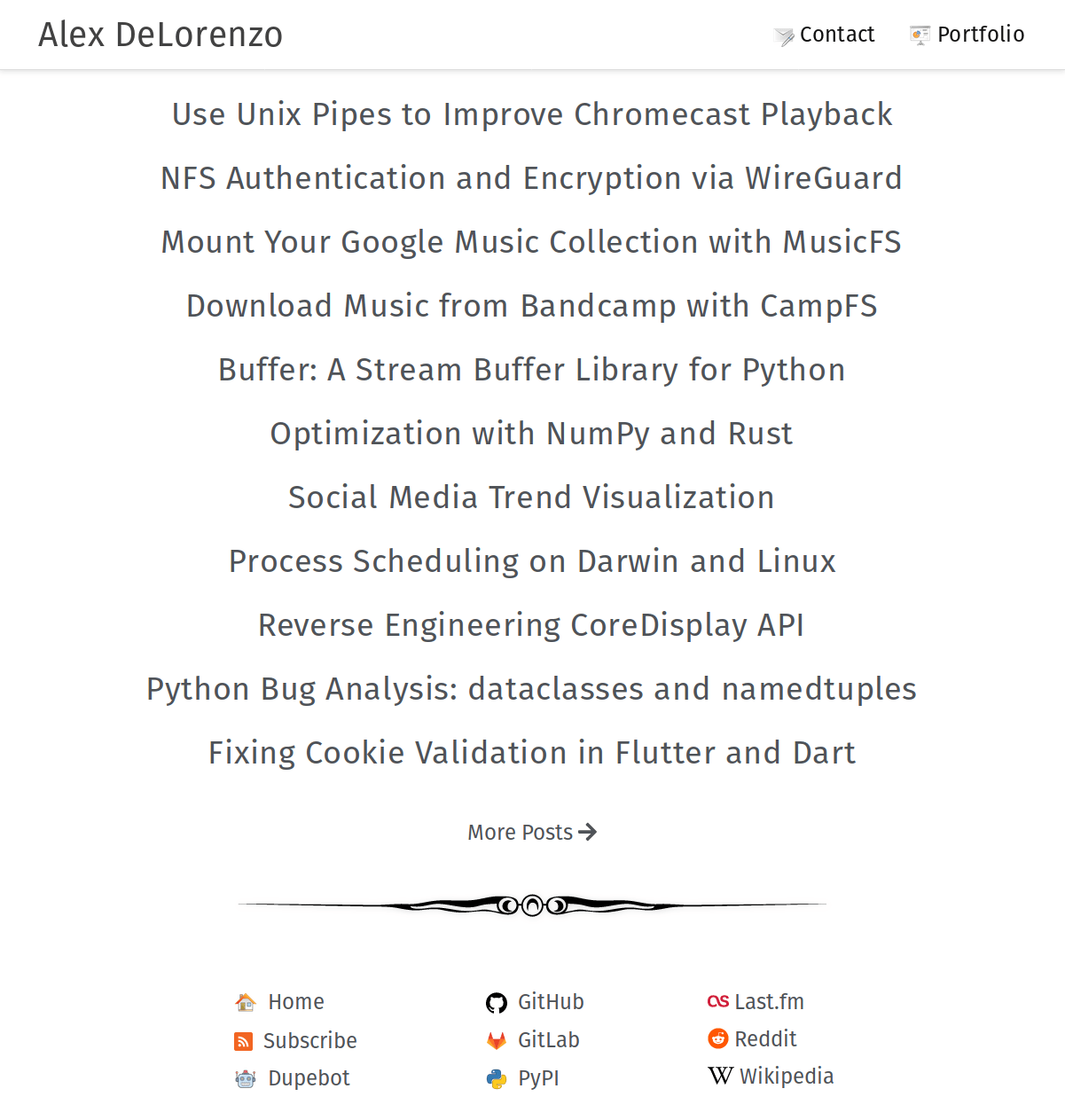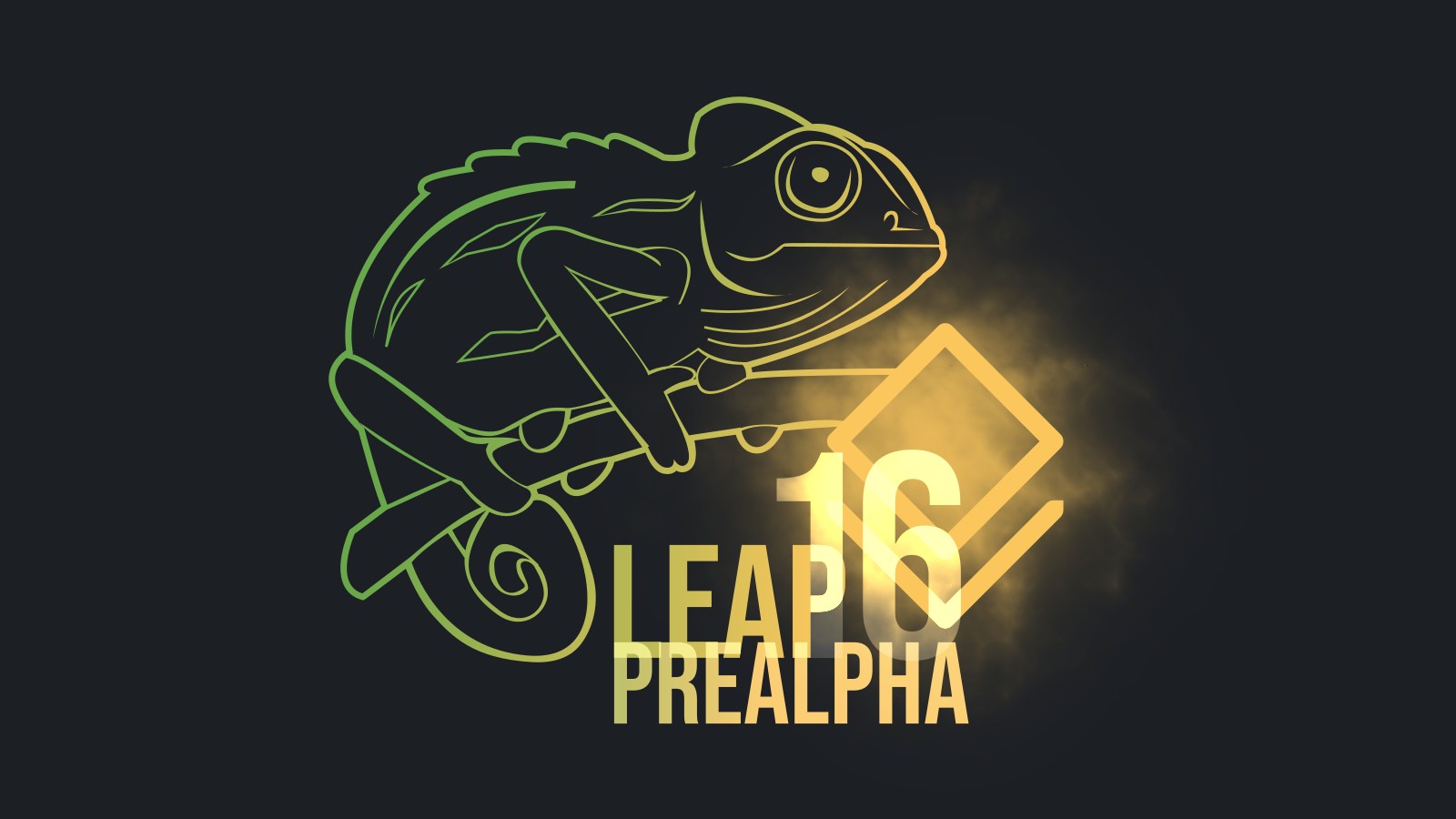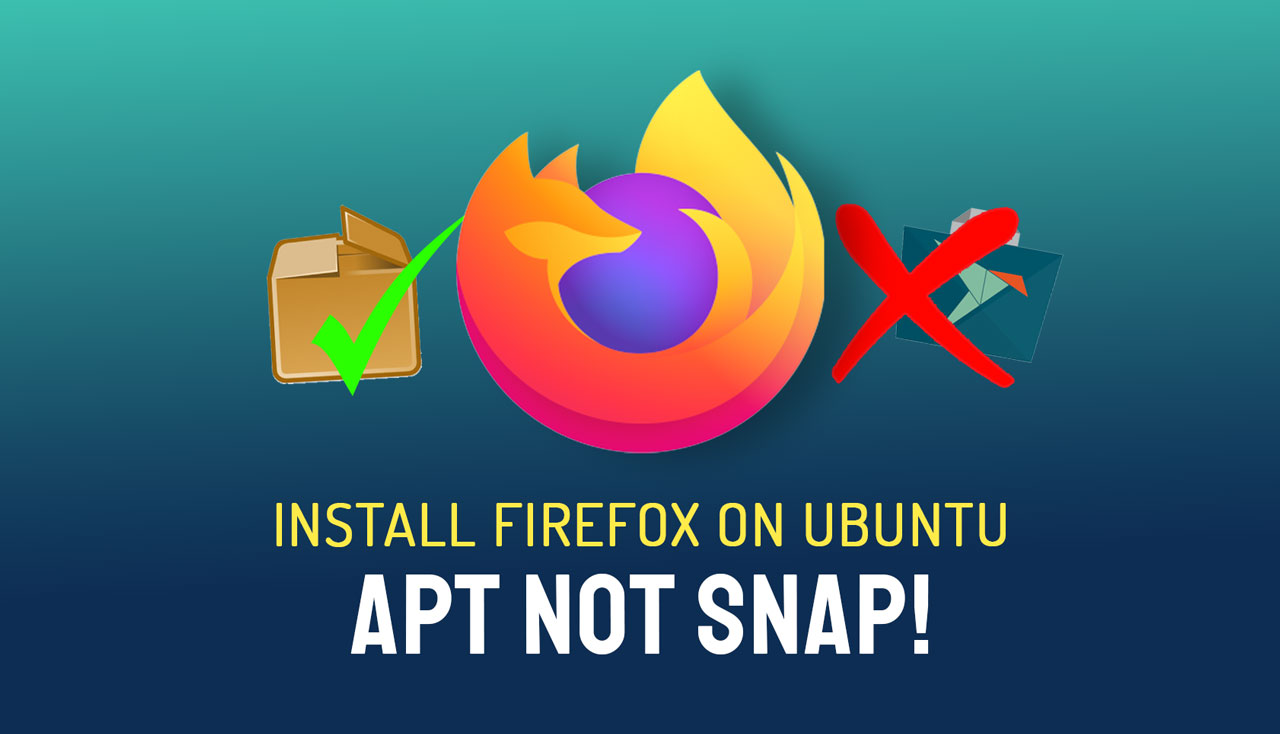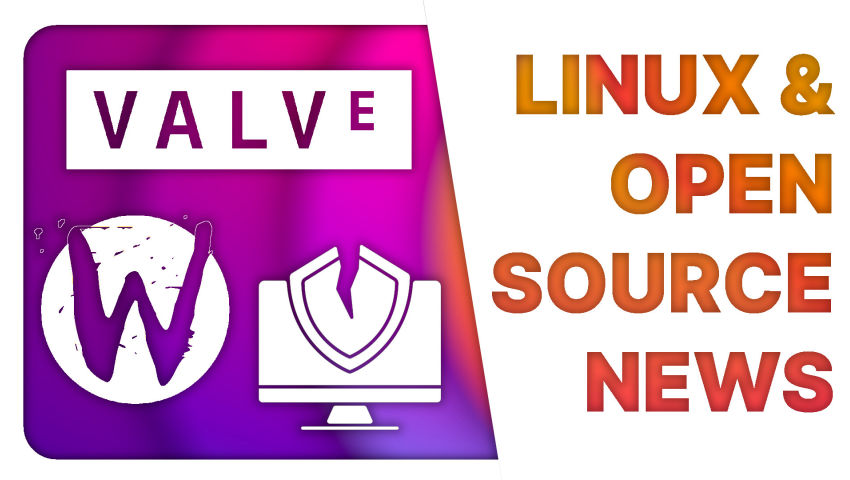Linux
So this is not a question about how to do this. I know how to do this. I also know that (at least under GNOME) it is neither easy nor intuitive. It involves manually editing several different text files to define MIME types and associating an application with that MIME type. My question is: is there an easy to use GUI tool to do this. I don’t think there is. Associating a file type to open with a specific app is easy, trivial even, to do on MacOS or Windows. Why is this seemingly simple task so hard to do in GNOME?

It's an Aoostar R1. A mini PC with an Intel N100 and two HDD drive bays. It's going to be my new NAS.
Hey guys, I switched to Bazzite about 5 months ago, but I currently have two seperate 2TB SSDs, one has Bazzite and the other still has my old Windows 11 install. I recently bought a 1TB SSD so that I can migrate Windows to the 1TB SSD and have two Linux distros installed at the same time on my two 2TB SSDs. I'm going to use BTRFS for both installations so I don't think I should have any problems accessing files between the seperate installations. I'm gonna keep one of the SSDs for Bazzite, and on the other I want to install CachyOS. I'm almost ready to wipe my old Windows 11 install off my 2TB SSD, I've made a fresh (debloated) Windows install on my 1TB SSD and copied over the stuff I care about keeping, so I'll soon be able to put a Linux distro on my 2TB SSD that's about to freed up. One of my main concerns is being able to share Plex watch history/data between the 2 seperate distros, I currently run Plex media server in a Debian distrobox and I'd like to have both my Linux installations to share the same Plex data so I don't have seperate watch history etc when I switch between distros. How do I go about having 2 distros share the same Plex data? I've tried searching but I can't quite find the right answer as to where my Plex media server data is while installed through distrobox. I'm open to migrating my Plex media server data to something else if that's the optimal way to go, but I'd prefer being able to just install a Debian distrobox instance on CachyOS, and then sharing that same data with my current Bazzite Debian distrobox instance so that no matter which OS I'm booted into, I have my watch history being updated and shared between the 2 OS'. TLDR, how to I access Plex through two seperate Linux installations while keeping my watch history? I want to be able to boot into either CachyOS or Bazzite and have them both share the same Plex history and data. I currently run Plex media server through a Debian distrobox install on Bazzite and I want CachyOS to share the same Plex data. Thanks in advance for anyone that can help! Edit: Where is my Plex data when it's installed through a Debian distrobox anyways? I've searched but I can't find the right answer. Where and how would I even point a new Debian distrobox install to my current Plex data? Edit 2: I have a 12TB HDD that contains all my TV shows and movies, and I know how to access it through all my different OS' but I want to keep the same watch history across two seperate Linux insallations. My current Plex media server installaion is running in a Debian distrobox in Bazzite, and I want to share that same data with a new installation of CachyOS or any other Linux distro that I choose to install. How do I do that?
cross-posted from: https://lemmy.world/post/20783411 > The Clipboard Project is a clipboard manager that works entirely in your terminal. It has tons of swanky features including this new one in 0.9.1 that lets you securely ignore copying passwords and other things like that! > > Link to the code: https://github.com/Slackadays/Clipboard
cross-posted from: https://lemmy.ml/post/21244508 > The Kubuntu Team is happy to announce that Kubuntu 24.10 has been released, featuring the new and beautiful KDE Plasma 6.1 simple by default, powerful when needed. > > Codenamed “Oracular Oriole”, Kubuntu 24.10 continues our tradition of giving you Friendly Computing by integrating the latest and greatest open source technologies into a high-quality, easy-to-use Linux distribution. > > Under the hood, there have been updates to many core packages, including a new 6.11 based kernel, KDE Frameworks 5.116 and 6.6.0, KDE Plasma 6.1 and many updated KDE gear applications.
I may have messed things up....... I had a lot of docker config and data stored in /home/skynet I then ran a sshfs command and it disappeared. I was trying to send the contents of /home/skynet (server) to /home/shady/skynet (desktop). This was in order to be able to edit the files on the server on the desktop via VSCodium. I'd love recommendations on how to do this, but first how do I get my files back??? Here is what I did ``` skynet@skynet:~/docker/keycloak$ sudo sshfs -o allow_other,default_permissions shady@192.168.50.16:/home/shady/skynet /home/skynet shady@192.168.50.16's password: skynet@skynet:~/docker/keycloak$ cd skynet@skynet:~$ ks -bash: ks: command not found skynet@skynet:~$ ls skynet@skynet:~$ ls -a . .. skynet@skynet:~$ lsblk NAME MAJ:MIN RM SIZE RO TYPE MOUNTPOINTS sda 8:0 0 3.6T 0 disk ├─sda1 8:1 0 16M 0 part └─sda2 8:2 0 3.6T 0 part /media/devmon nvme0n1 259:0 0 476.9G 0 disk ├─nvme0n1p1 259:1 0 476G 0 part / ├─nvme0n1p2 259:2 0 1K 0 part └─nvme0n1p5 259:3 0 975M 0 part [SWAP] skynet@skynet:~$ cd /home skynet@skynet:/home$ ls changedetection linuxbrew skynet syncthing skynet@skynet:/home$ cd skynet/ skynet@skynet:~$ ls skynet@skynet:~$ ls -a . .. skynet@skynet:~$ cd /home skynet@skynet:/home$ ls changedetection linuxbrew skynet syncthing skynet@skynet:/home$ fusermount -u /home/shady/skynet fusermount: bad mount point /home/shady/skynet: No such file or directory skynet@skynet:/home$ sudo journalctl -u sshfs -- No entries -- skynet@skynet:/home$ ```

cross-posted from: https://lemmy.world/post/20670854 [https://gitlab.com/christosangel/c-squares](https://gitlab.com/christosangel/c-squares) `c-squares` written in the C language will render random coloured rectangulars in the terminal, while the font, speed, density, color, ratio and number of the shapes drawn are fully costumizable. Every time a rectangular is complete, a new one starts to take shape. 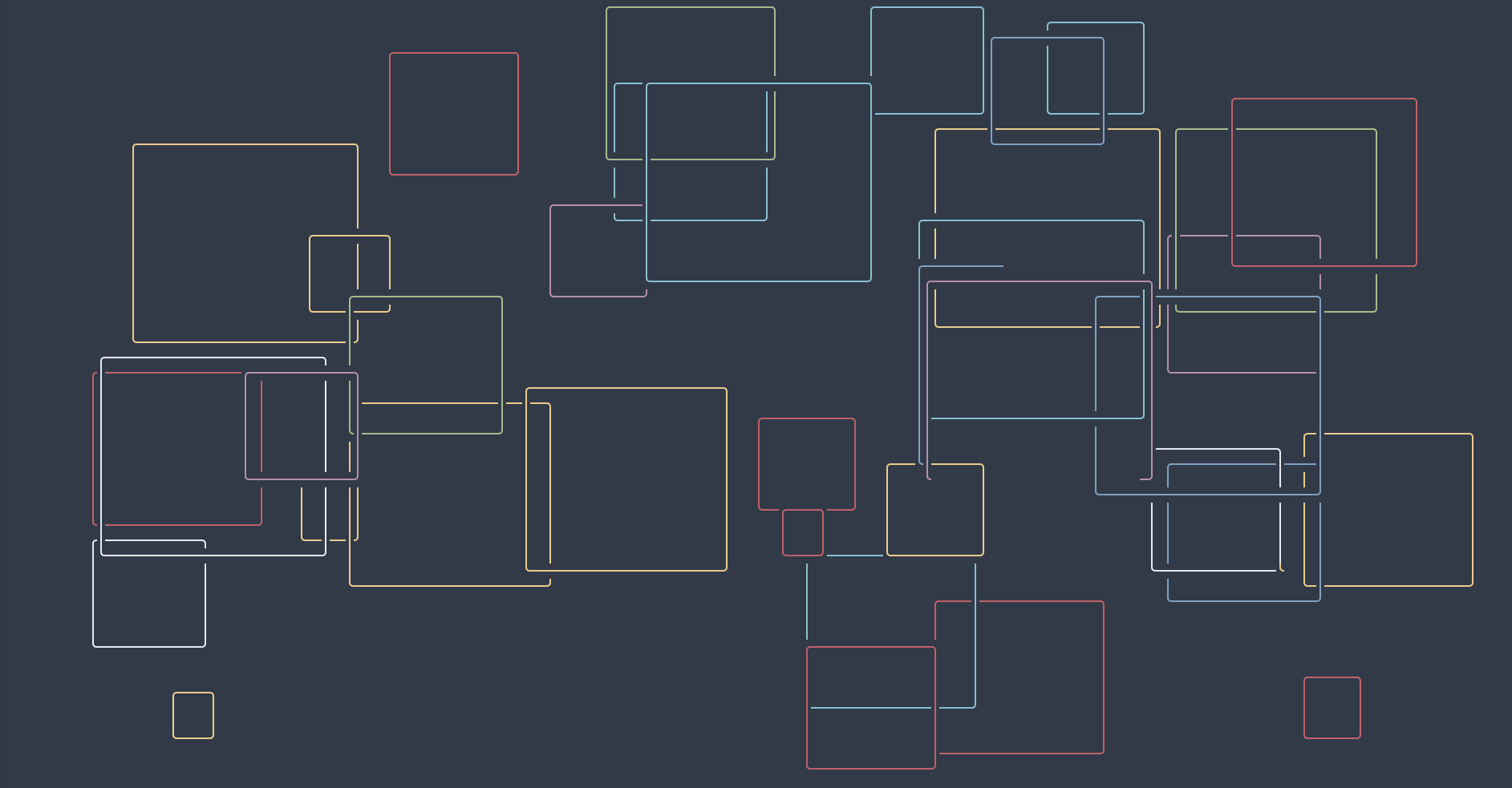 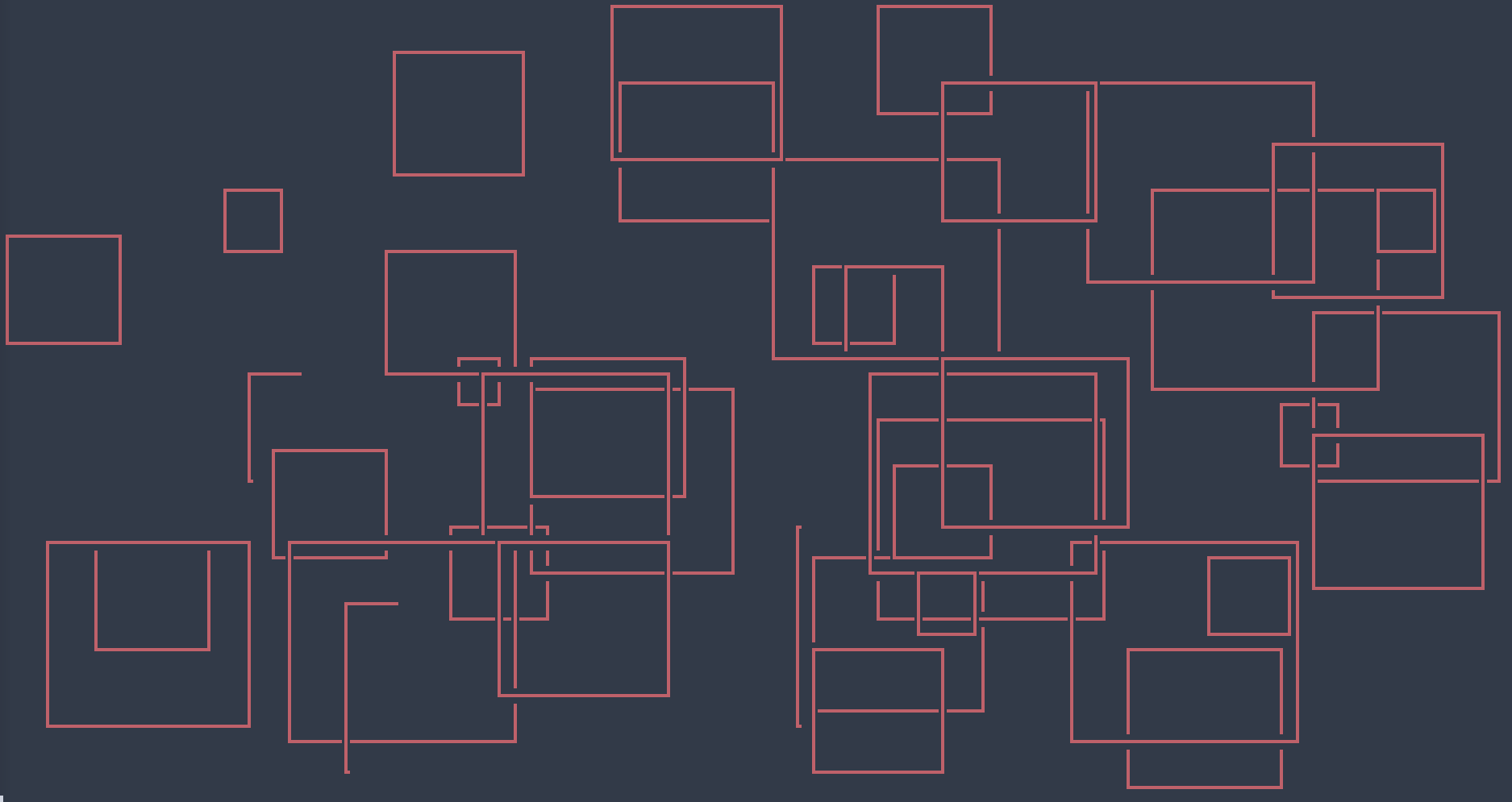 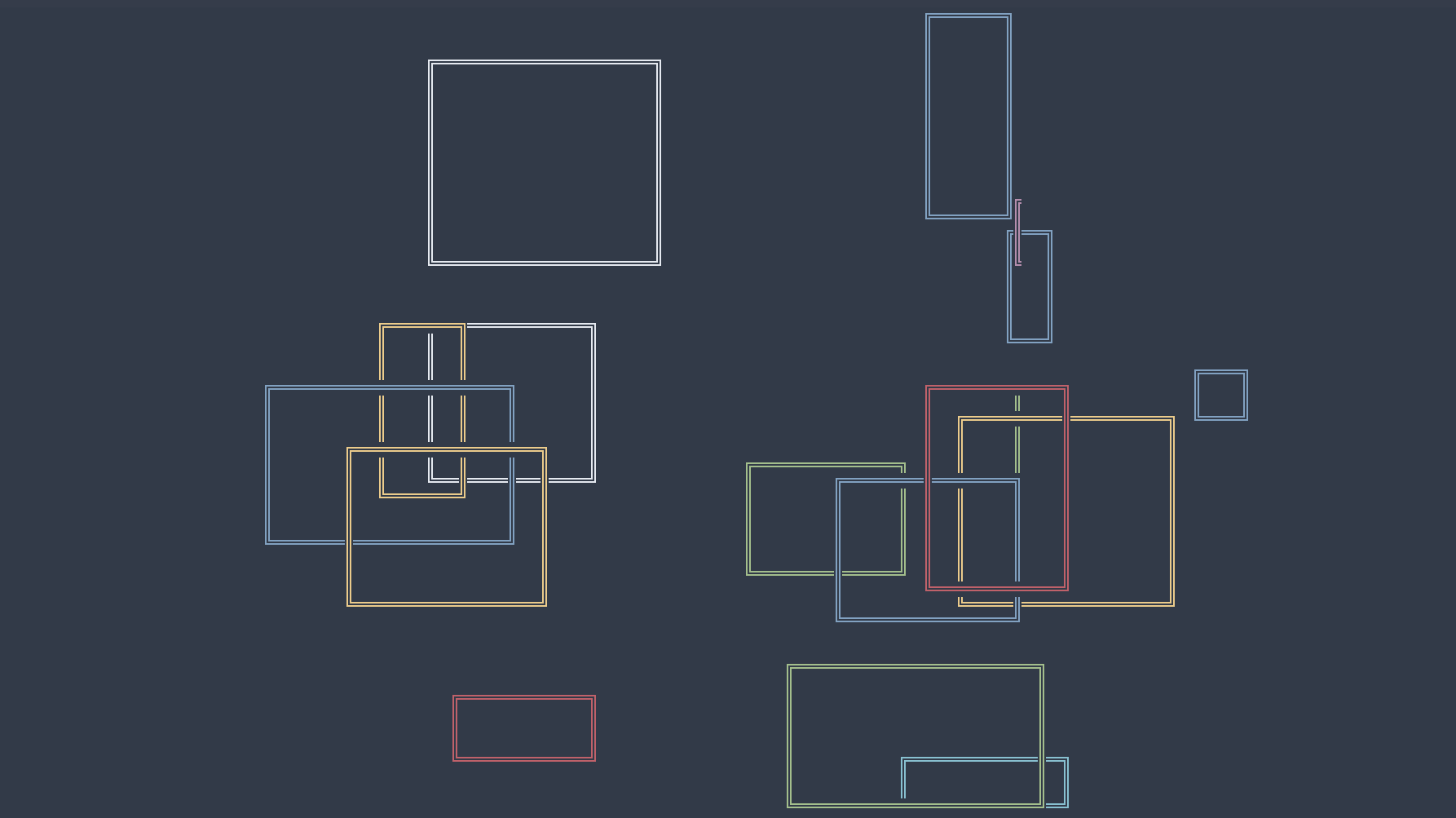 --- Feel free to explore the endless variations.
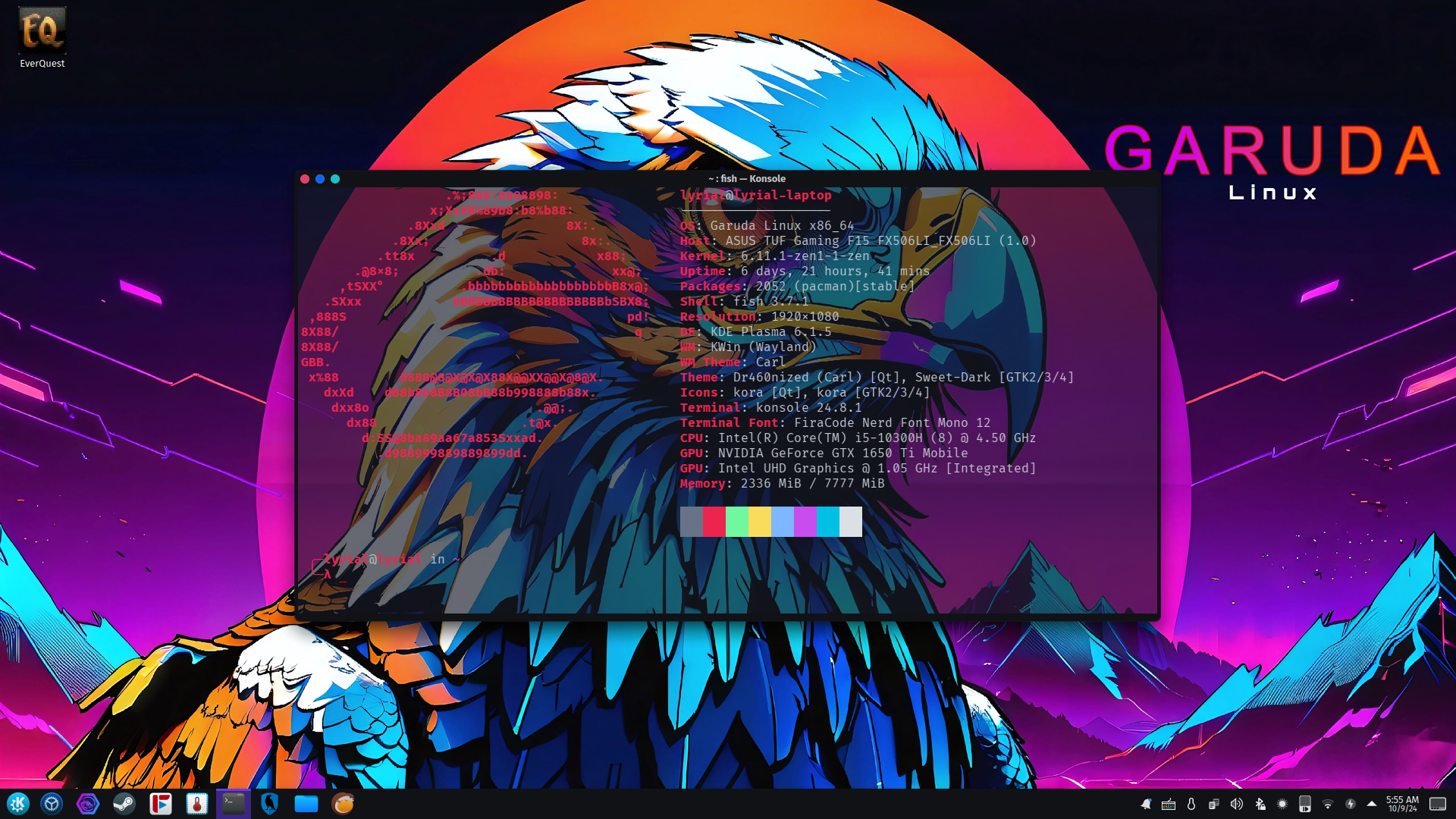 The host is the most important thing here, since I am finding it hard to get a full replacement for the screen. If someone has an answer for a fix, that would be awesome.
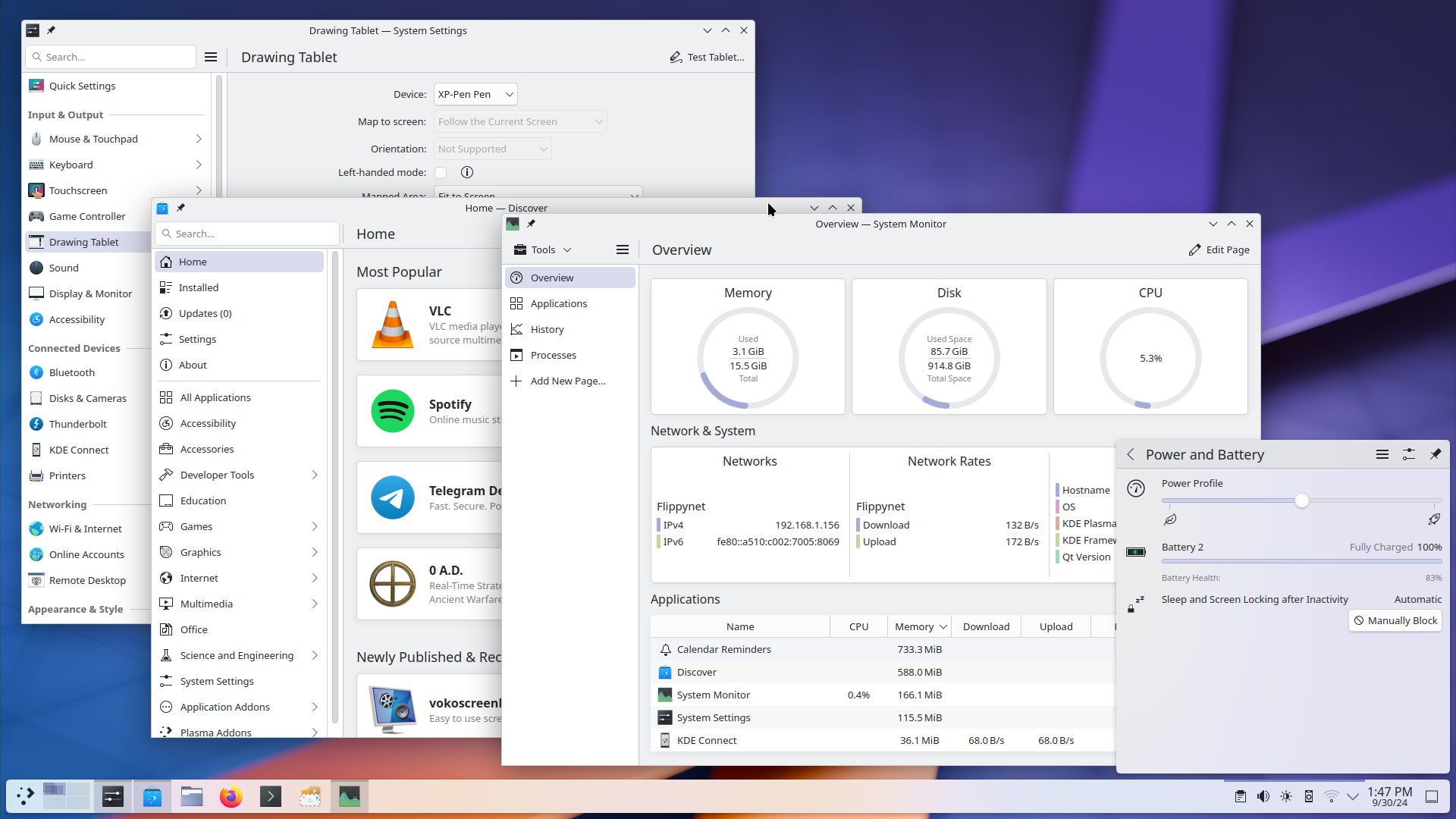 kde.org
kde.org
cross-posted from: https://lemmy.ml/post/21161182 > Plasma 6 has come into its own over the last two releases. The wrinkles that always come with a major migration have been ironed out, and it’s time to start delivering on the promises of the new Qt 6 and Wayland technology platforms that Plasma is built on top of. > > Plasma 6.2 includes a smorgasbord of new features for users of drawing tablets. It implements more complete support for the Wayland color management protocol, and enables it by default. There is also improved brightness handling for HDR and ICC profiles, as well as HDR performance. A new tone mapping feature built into Plasma’s KWin compositor will help improve the look of images with a brightness or set of colors greater than what the screen can display, thus reducing the “blown out” look such images can otherwise exhibit. > > When it comes to power management You can now override misbehaving applications that block the system from going to sleep or locking the screen (and thus prevent saving power), and you can also adjust the brightness of each connected monitor machine separately. > > Plasma’s built-in app store and software management tool, Discover, now supports PostmarketOS packages for your mobile devices, helps you write better reviews of apps, and presents apps’ license information more accurately. > > In Plasma 6.2, KDE have overhauled System Settings’ Accessibility page and added colorblindness filters. They've also added support for the full “sticky keys” feature on Wayland. > > This and more in full anounncement and changelog.

I had uninstalled snap a while ago. This just popped up in my update list on Discover (KDE Neon).
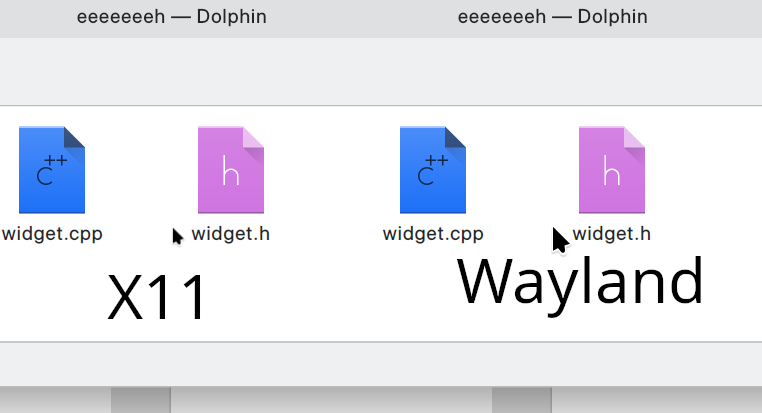 blog.vladzahorodnii.com
blog.vladzahorodnii.com
cross-posted from: https://lemmy.world/post/20575347 > cross-posted from: https://lemmy.kde.social/post/2098933
 pointieststick.com
pointieststick.com
cross-posted from: https://lemmy.ml/post/21048016 > Plasma 6.2 will be released in just three days! In the end we did revert the notification changes, so users of Plasma 6.2 won’t experience any new issues with notifications. The list of verified 6.2 regressions is extremely small, with most being low importance. We will of course eventually get them fixed anyway! But they aren’t release blockers.
So recently it was brought to my attention about a new(ish) filesystem being created. BcacheFS has some really cool features, some for example are Copy on write (COW) - like zfs or btrfs Full data and metadata checksumming Multiple devices Replication Erasure coding (not stable) Caching, data placement Compression Encryption Snapshots Nocow mode Reflink Extended attributes, ACLs, quotas Scalable - has been tested to 100+ TB, expected to scale far higher High performance, low tail latency Already working and stable, with a small community of users I learned about BcacheFS as i am currently going through an Gentoo install and wanted to try out a new filesystem. i originally went for ZFS until i learned there is no active maintainer for OpenZFS on Gentoo as of now. and looked at Btrfs and eventually found BcacheFS. The features look very amazing, however i couldnt find many people daily driving it? i saw a few posts on Arch wiki about trying to get it to work. and i try installing it, as my main FileSystem, but ran into trouble when trying to install grub. its exact complaints was something along the lines of "cant install grub on /dev/sdc3 /dev/sdd ". i was trying to make staggered storage with a 500gb SSD and a 2TB HDD. But eventually gave up after watching a few videos of immolo which he eventually got it working but only thought Unified grub with Systemd. which for my Gentoo systems i really prefer openRC. But enough about me, do any of you fellow linux users use BcacheFS? if so whats your setup and experiences? also if you have recently looked at lore.kernel.org Mr.Torvald says he regrets merging it into the mainline kernel because of bug fixes. https://lore.kernel.org/lkml/CAHk-=wj1Oo9-g-yuwWuHQZU8v=VAsBceWCRLhWxy7_-QnSa1Ng@mail.gmail.com/ which i thought rather interesting
Hello, I am currently using a dual boot Windows 10 + Manjaro KDE. Right now i'm using Windows for gaming and Manjaro for pretty much everything else (Development, music production, web surfing, text editing, etc.). Seeing that gaming on linux is way more accessible than before with to proton, and that the end of life of windows 10 is in roughly a year, I would like to use linux for pretty much everything (including gaming) and keep Windows on the side, as an emergency solution in case something goes wrong. To do that, i would like to reorganize the partitions, but I am unsure of the safest way to do it. Right now, my disks look like this : ``` > lsblk -f NAME FSTYPE FSVER LABEL UUID FSAVAIL FSUSE% MOUNTPOINTS sda ├─sda1 ntfs Recovery tools F65647105646D153 ├─sda2 vfat FAT32 SYSTEM A848-DA23 969,9M 3% /boot/efi ├─sda3 ├─sda4 ntfs Windows 388E60108E5FC4D2 └─sda5 vfat FAT32 3171-9208 sdb ├─sdb1 ├─sdb2 ntfs New Volume 5CF414E0F414BE68 └─sdb3 ext4 1.0 52d29b2c-8d6d-4ed6-b6eb-5d31e292c14b 17,8G 81% / sdc └─sdc1 ntfs TOSHIBA EXT 6630DF0630DEDC5D sr0 > lsblk /dev/sda NAME MAJ:MIN RM SIZE RO TYPE MOUNTPOINTS sda 8:0 0 238,5G 0 disk ├─sda1 8:1 0 500M 0 part ├─sda2 8:2 0 1000M 0 part /boot/efi ├─sda3 8:3 0 128M 0 part ├─sda4 8:4 0 235,9G 0 part └─sda5 8:5 0 1000M 0 part > lsblk /dev/sdb NAME MAJ:MIN RM SIZE RO TYPE MOUNTPOINTS sdb 8:16 0 931,5G 0 disk ├─sdb1 8:17 0 16M 0 part ├─sdb2 8:18 0 803,5G 0 part └─sdb3 8:19 0 128G 0 part / ``` sda is a ~200 Gb SSD and sdb a 1Tb HDD. The windows partition is on sda4 and the manjaro partition is on sdb3, meaning that windows takes about 10s to launch while manjaro takes 1 or 2 minutes. To fix this, I would like to move my Manjaro partition on sda, alongside windows. My best guess to do this would be to : 1. Backup all important data from windows and Manjaro (on an external hard drive) 2. Use window's partition tool to create a partition for Manjaro on sda 3. Install Manjaro on sda 4. Reorder the sdb partitions to clear the old Manjaro data Can something go wrong with this method ? And what are the partitions I should ABSOLUTELY do not modify ? As a subsidiary question, I am wondering if Manjaro KDE is a good distro for my needs. I have been using for about two years so far with no major issue, but I have heard that for some people this ditro can break pretty easily. That being said, I use almost no package from the AUR, so maybe that's why ? Do you have any recommendations regarding distros for mainly dev/gaming? And is it possible to put KDE on it easily ? I like the way it feels/looks Anyway, thank you if you have any advice or opinion on this.
I am using TimeShift on my Kubuntu PC with BTRFS snapshots and I have to say that it's the most wonderfully easy and practical backup tool I've ever used. I recommend it to anyone using any distro, especially if you're using one that's less stable like rolling release, or bleeding edge ones. The cost of storage is minimal to a point you can make snapshots everyday and there are other tools you can install to update your Grub to allow you to boot into any snapshots and recover your filesystem in case of problems. **But beware!** TimeShift was implemented with Ubuntu's way of configuring BTRFS volumes in mind. I was testing out Debian in a VM and trying to set up Timeshift to see if I can make snapshots and Timeshift didn’t work because of how Debian sets up volumes with BTRFS. Since Timeshift uses Ubuntu’s way of setting up volumes and nothing else. Check this video to find out how to install Debian (or any other distro) on BTRFS so it works with Timeshift.
ZLUDA is a compatibility layer for Nividia's CUDA on other processors
I'm considering replacing my Nvidia Shield in the future and plan to build a small TV box as its replacement. I'm curious about what operating systems people typically use for these types of TV-specific devices, as well as which desktop environments are preferred. Is KDE or GNOME better optimized for use on TVs?
 www.gamingonlinux.com
www.gamingonlinux.com
cross-posted from: https://lemmy.world/post/20511109 > https://github.com/Open-Wine-Components/umu-launcher
Despite having an external drive where I try to install all software that isn't related to the OS, I have somehow found my SSD 70% full. Is there a tool out there that will let me see used storage with a tree-loke GUI that will let me sort by file size?
This is my most needed feature in linux. I want zero 'connect/disconnect' sounds and if the laptop is asleep I don't want it to wake up in the middle of the night for no reason. I have an infinite supply of Windows laptops from work but I hate them with a burning passion and I can't afford to replace my Macbook. If someone can tell me what linux distro is the most silent and least annoying I will erase my entire Windows partition this weekend.
Hey, how would you go about this: I have let’s say hundreds of files, most of which contain some emoji characters in the filenames. How to script - or if an app can do it great! - parsing all these files and removing those … idiotic characters. Not for nothing but yeah Unicode is great, lots of languages yada yada, but emojis? Fucking emojis??? Ian Malcom thinks just because we could, doesn’t mean we should! So yeah. Back in the day when I did some developing in VB, I guess I’d load the filenames into memory as strings and then do an _instring_ replacement to null of any character that is within the char() range. So… if I could find out the range wherein lay the damned-to-hades-for-eternity emoji character set, I’d null those out or replace them each with an E for Evil. So… anyone know the easy approach to scripting this? Or is there an app that will already do it? I’m gonna look through all the options in krename kfind etc. all those but I doubt any of them has this. Anyway thanks if you have any ideas. Especially something I can save and just use on a directory of files anytime.
I just ordered an Aoostar R1N100 mini PC to replace my aging Synology NAS. Now I'm thinking about what to install on it. It's supposed to work as a NAS but I also want to host some services on it like papeless-ngx and Jellyfin, which I both run in Docker containers on a different machine right now. Plus anything that takes my fancy in the future. Current candidates are OpenMediaVault and TrueNAS. My priorities are ease of installation and administration, as well as reliability. Which one would you recommend or are there any alternatives I'm not aware of? I've also considered Unraid, but I'd prefer something FOSS.
 www.evilsocket.net
www.evilsocket.net
"A remote unauthenticated attacker can silently replace existing printers’ (or install new ones) IPP urls with a malicious one, resulting in arbitrary command execution (on the computer) when a print job is started (from that computer)." Just spent some time removing CUPS from my Linux servers where it is not needed and only added to my attack surface. What other services should be removed from Linux servers?

cross-posted from: https://lemmy.world/post/20356859 [https://gitlab.com/christosangel/magic-tape](https://gitlab.com/christosangel/magic-tape) Magic-tape is an image supporting fuzzy finder tui YouTube client. 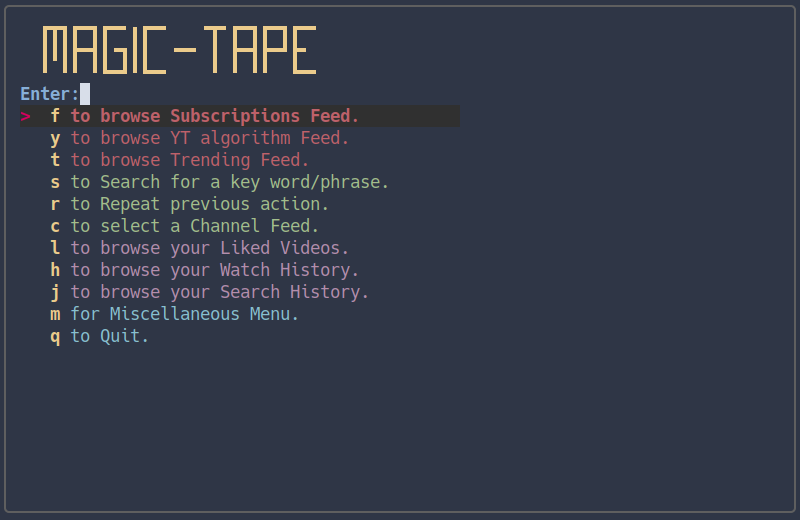 --- --- ## UPDATE Now introducing a new feature: the video description as well as the comments written by YT viewers will be shown in the terminal window, while the video is reproduced. 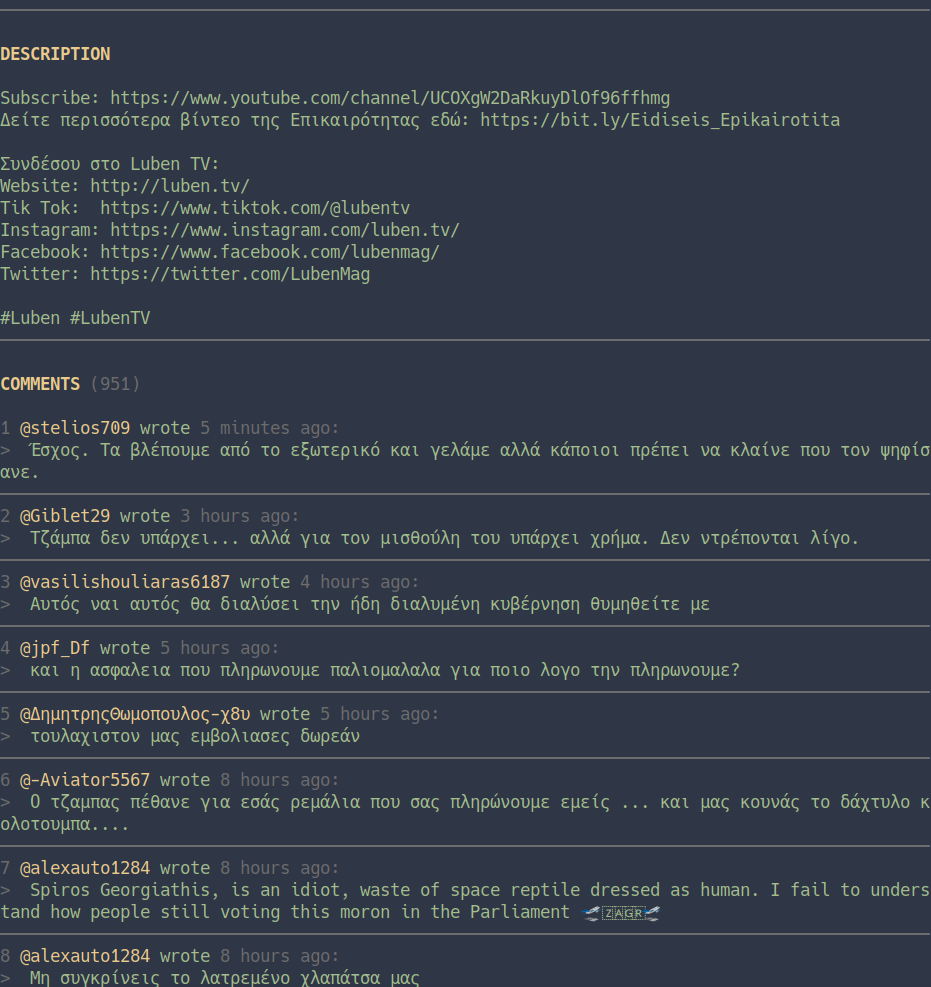 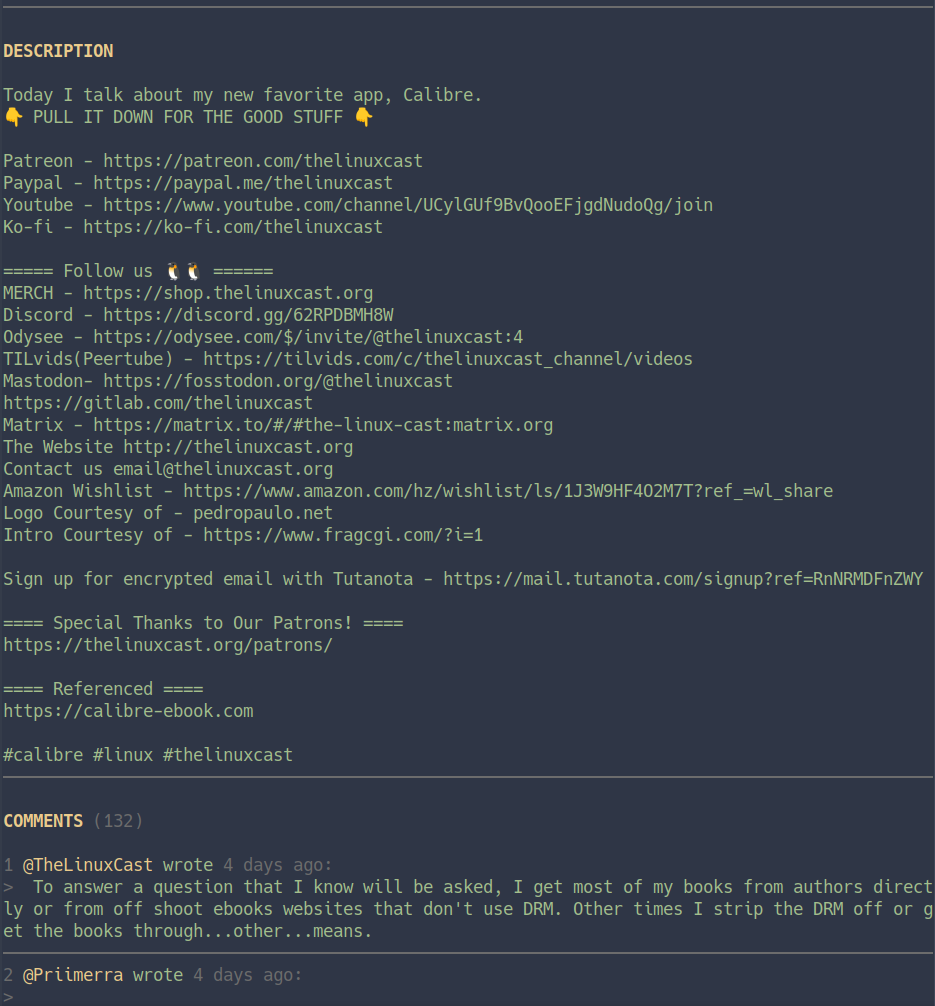 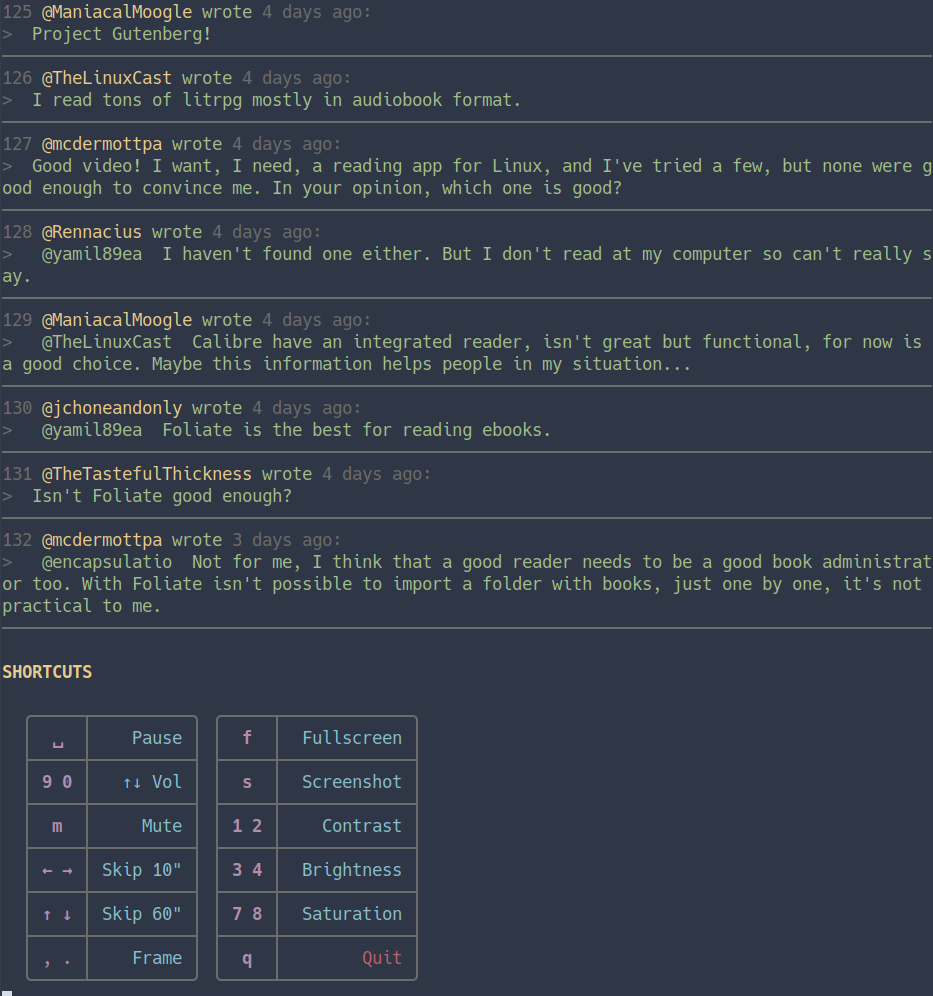 Thus, the user can be satisfied reading other viewers having a swing at the politicians/celebrities/stars they love to hate, or, watch closely to their heart's content, as cyber nuclear attacks are launched between self-righteous, valiant and livid keyboard fighters. Comment loading is asynchronous to video loading, so it is possible that there will be some delay in the appearence of the comments. That depends on the number of comments, network speed etc.


